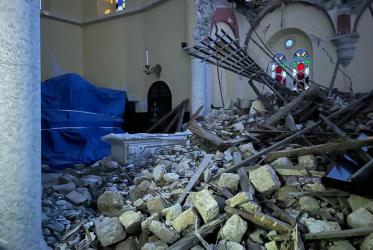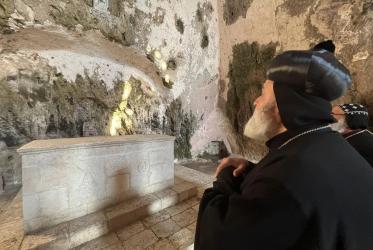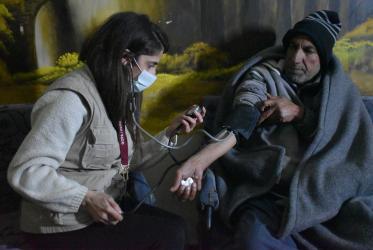Ecumenical Patriarchate
Distribution (membership):
- Turkey: 5,000
- Europe: 1,500,000
- Asia: 800,000
- Latin America: 150,000
- North America: 2,800,000
The history of Constantinople as a patriarchate began in 330, when the Emperor Constantine I decided to move the seat of his government from Rome to the small town of Byzantium along the Bosphorus, in the eastern region of his empire. Connected with this is the tradition of St Andrew who in the first century came to the area and established the church. The Church of Byzantium appears in history first as a bishopric of the diocese of Heraclea, Thrace. It grew to become a great ecclesiastical centre, after the establishment of New Rome or Constantinople. The Second Ecumenical Council of Constantinople (381) conferred upon the bishop of the city the second rank after the bishop of Rome. The fourth Ecumenical Council of Chalcedon (451) gave a definite shape to the organization of the Church of Constantinople. From 520 onwards the head of the church became known as the ecumenical patriarch. After the great schism between Rome and Constantinople in the 11th century, the patriarch became the primus inter pares among all the patriarchs of the Orthodox churches.
The Patriarchate of Constantinople is governed on the basis of the decisions of the ecumenical councils, the holy canons, and the long history, tradition and praxis of the church. The patriarch is elected by an assembly of the "endemousa", a synod consisting of all metropolitans who are Turkish citizens, residing in Turkey. The synod is the official organ of authority of the patriarchate, managing spiritual affairs such as the nomination of the metropolitan members of the synod, the election of new bishops, overseeing monasteries, etc. By the Treaty of Lausanne (1923) the Turkish Republic is bound to protect the Greek Christians in Constantinople. The patriarchate holds jurisdiction over the faithful in Europe (Great Britain, France, Germany, Austria, Italy, Sweden, Belgium, Switzerland, the autonomous Church of Finland, and the Russian Exarchy of Western Europe) and the archbishoprics of Australia and New Zealand. The archbishop of America (based in New York) governs the Greek Orthodox Church of North America also under the general jurisdiction of the ecumenical patriarch. The dioceses of Latin America belong also to the jurisdiction of the Ecumenical Patriarchate.
The Ecumenical Patriarchate was among the first to participate in the formation and development of the ecumenical movement, and is particularly known for its Encyclical to "All the Churches of Christ", issued in 1920. It has been involved in the WCC from its beginning. It has had a permanent representative at the headquarters of the WCC in Geneva since 1955. The patriarchate is involved in the coordination of inter-orthodox relations, and particularly the preparations for the holy and great synod of the Orthodox churches. It is also engaged in bilateral theological dialogues with the Roman Catholic Church, the Anglican Communion, the Ancient Oriental churches, the Old-Catholic churches, the LWF, the WARC; in bilateral conversations with the WMC; and in theological conversations on a national level in different parts of the world (EKD and others). The ecumenical patriarchate participates also in the Conference of Secretaries of the Christian World Communions which meets annually.
A multimedia portrait of the Ecumenical Patriarch at the consecration of a new Orthodox Church in Switzerland can be viewed on the 'Keeping the Faith' website.





